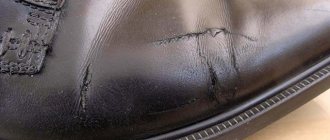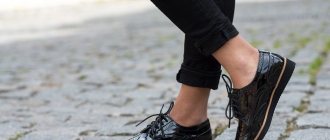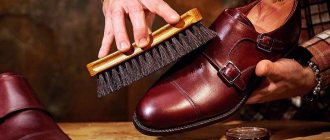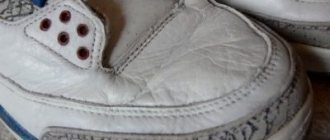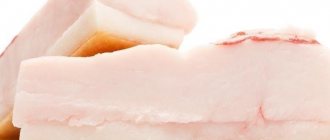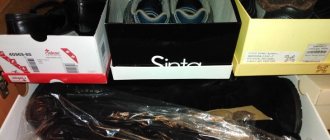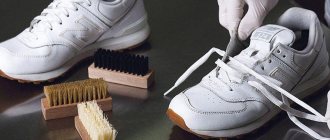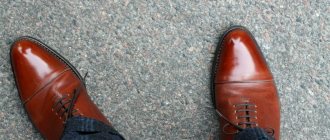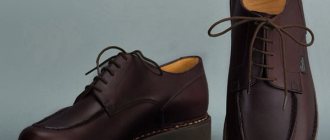09/10/2019 Maria Ivanova 0 comments
Incorrect handling of leather shoes can give them an unaesthetic appearance, when, due to numerous creases, an important wardrobe item looks dented and wrinkled. No one wants to be called a slob because of shoes that look like they've been under the wheels of a truck. Therefore, it is important to know how to remove wrinkles from leather shoes.
So, what should you do if a very stylish pair of shoes or boots is completely covered with ugly creases? This is not at all a reason to sadly throw shoes that have been tested for durability and comfort into the trash bin. After all, leather is a very expensive material. Everything would be very sad and hopeless if several effective ways to correct the situation were not found.
It turns out that it is quite possible to restore the original shape of the shoe and ensure that changes in geometry are not noticeable.
Causes of creases
You shouldn’t blame the manufacturer for deciding to save on materials. He usually has nothing to do with it. Wrinkles appear even on the most expensive leather. The main reasons for their formation are:
- softness of the material (and without it, hard shoes would be very uncomfortable to wear);
- everyday wear;
- inaccurate size matching;
- lack of quality care.
Shoes with decoration (holes, patterns, additional seams) are less prone to creases. The most problematic are shoes with a single seam, usually located at the back.
Basics of care
Genuine leather has features that should be taken into account when purchasing and wearing shoes. To prevent creases from forming on shoes and boots, you need to follow simple rules:
- You must always keep shoes made from natural materials clean and use them only for their intended purpose.
- Wet shoes need to be dried at room temperature. To prevent the product from deforming, you should stuff it tightly with paper.
- After drying, the skin must be treated with a special cream or wax to soften and moisturize it.
- You should not wear wet shoes, as the leather will stretch in this state.
- It is necessary to select a pair that matches your foot size.
- You can store boots, boots and shoes in cardboard boxes or textile bags, but not in plastic bags, which limit the access of oxygen.
Important! It is better not to use silicone-based shoe products, as they do not moisturize them, but only add shine and attract dust. It is not recommended to use heating devices or other heat sources for drying.
These simple recommendations will help prevent the appearance of creases and cracks in genuine leather products.
Minor dents and creases
Method 1. Fat cream
Shoes or boots are cleaned and tightly stuffed with paper. Next comes the thick cream. Its task is to make the skin more pliable. The cream is applied in a thick layer to the surface of the shoe. After which the owner of the damaged pair waits until the cream is absorbed into the skin and applies it again, sparingly, to the damaged area.
And in this form, the shoes should stand for at least a day to smooth out and become like new.
Method 2. Milk
If the shoes have minor creases and the leather from which they are made has a light shade, you can use the proven method of stuffing shoes with paper, only use regular milk instead of cream.
The leather pair is impregnated with it several times until the product acquires the necessary softness. And then it’s a matter of time. You will have to wait at least a day for the skin to smooth out.
Method 3. Glycerin “mask”
It will also help update “folded” shoes. To do this, all dents are filled with glycerin, after which it takes time for it to be absorbed. It is enough to spend 15 minutes on this procedure. Then the excess glycerin is removed with a cloth, and the shoes are sent to “rest” for two days.
Method 4. Painting
It is possible to soften the leather on shoes or boots and smooth out wrinkles using regular paint. The surface should be painted in 2 layers. This will update the product and rid it of all irregularities.
Method 5. “Liquid skin”
Matches the color of the product. Apply to cleaned and dried shoes. First, the place where the fold has formed should be cleaned with sandpaper. This procedure should be performed carefully. Also, the area to be treated must be degreased with alcohol.
“Liquid skin” is applied in an even layer and left for some time. At the final stage, shoe polish is applied.
Removing large creases
You can eliminate large defects on leather shoes like this: the product must be stuffed with paper to give it shape. Then you need to cover the boots with a damp cloth made of synthetic material (microfiber) and leave until the leather softens. Next, you need to heat the iron with steam to medium, and iron the areas with folds through a damp cloth.
Before starting heat treatment, you need to check whether the napkin will be damaged under the influence of temperature. If everything is in order with the material, then you can begin to remove defects. After evaluating the result, the restoration can be repeated.
Another way to eliminate large creases with cracks is as follows: you need to treat the defective area of the skin with sandpaper with fine abrasive particles. You don’t need to make a lot of effort, just lightly rub the area with creases. Next, you need to degrease the creases with acetone or solvent. This must be done carefully so as not to damage other areas. According to the instructions on the package, you need to cover the damaged area with liquid leather, dry it, treat it with a special cream and polish it with a soft cloth. You can get rid of wrinkles using wax. It is necessary to wash and dry the boots and fill the folds and cracks with heated wax. After hardening, excess wax can be easily removed with a cloth. Reanimated shoes should be coated with cream and thoroughly polished. This way you can completely remove folds or make them invisible.
How to remove small bumps on leather shoes
Various products help eliminate subtle creases and folds. Some are already in the house, while others will have to be purchased specially.
Before treating shoes with each of the preparations you need to:
- Clean products from dirt and dust.
- Degrease. You will need a piece of cotton wool soaked in medical alcohol, kerosene, and white spirit.
- Dry your shoes.
Cream
Shoes are stuffed with paper as tightly as possible. Office paper, newspapers, magazines - whatever you can find - will do. “Wrapped” shoes or boots are left for 2 days to stretch a little. And then - thickly lubricate with a rich cream for leather products and leave for another day. The cream fills folds and makes them less noticeable, and helps remove small creases completely.
Wax tinting
Leather shoes are often treated with wax. Any one is suitable:
- bee;
- paraffin.
First, the wax is heated to a temperature of about +50 °C. No longer necessary - there is a risk of damaging the skin (especially natural skin). Then, carefully fill the fold with wax using a small brush. Leave the shoes in a dark place until the wax hardens completely. Excess is removed with a piece of soft cloth.
If the waxed area is slightly different in color from the rest of the shoe, complete tinting is performed:
- The shoes are stuffed with paper and lubricated with cream.
- Leave for 3 days. Re-lubricate every day to soften the skin.
- After 3 days, rub with unheated wax.
Painting
Often, to combat creases, shoes are coated with a special leather paint. It is sold in most industrial and cosmetic stores. The consistency of the drug should be liquid.
Several conditions must be observed during and after painting:
- the paint is matched to the color of the shoes;
- work with a fine bristled brush or shoe sponge;
- cover the entire surface (but make a thicker layer on the creases);
- leave to dry in a place out of direct sunlight.
On paint packaging it is often written that it is made for “skin restoration” or “skin restoration”. It doesn't matter. Any paint will do, even if there are no special marks on it. What you should pay attention to is the price. It is better not to buy cheap drugs.
There is also paint for the ends (cuts) of leather. She doesn't fit either.
Milk
It is better to treat beige, light brown or white shoes not with cream, but with cow's milk. They work in a similar way - stuff it with paper, leave it for a couple of days, then generously lubricate it with a brush or sponge dipped in milk. Leave to dry.
There are no recommendations regarding the origin, fat content and pasteurization of milk - any is suitable.
Glycerol
Glycerin (it is sold in any industrial market) is rubbed into the folds and the surface surrounding them, and then left for 10 minutes. The excess is carefully wiped off with a damp sponge. Polish shoes with a dry cloth.
Glycerin is also used to soften shoes before waxing or painting.
Liquid skin
This remedy is the most effective. It even copes with deep folds and cracks. They work with it like this:
- They buy leather in a jar that matches the shade of the shoes.
- Clean the boots from dirt, degrease them with alcohol and leave until completely dry.
- Apply the drug in a thin, even layer. Leave for 5 minutes.
- If the folds are still noticeable, repeat the procedure. Can be repeated up to 4-5 times without harm to shoes.
- When the boots are dry, they are treated with a rich cream.
Recommendations
Expert advice will help you cope with the task quickly and without problems:
Before removing creases, shoes must be cleaned of dust and dirt.- You should purchase shoes in accordance not only with the size, but also with the appropriate fullness.
- In cases where you can’t deal with creases on your own, or you don’t have time for this, you can turn to a shoe workshop for help.
- You should not use shoe care products immediately before going outside. This must be done in advance so that the cream has time to absorb and act.
- For removing creases, silicone-based products are less effective than wax-based products. This is due to the fact that silicone does not moisturize the surface, but only gives it shine.
- The purchased shoe care products must match the shoes not only in color, but also in the texture of the material. Information about this is present on the packaging. For example, “for smooth leather”, “for nubuck”, etc.
How to get rid of large folds and creases
The best way to “deal” with deep creases is to use an iron:
- Shoes are stuffed with dry newspapers.
- Cover with a damp cloth (clean only) and leave until the skin is saturated with moisture. If the rag dries before the skin gets wet, it is re-wetted.
- Turn on the iron at medium power and gently iron it through a cloth. If necessary, repeat up to 3-4 times.
- Allow the boots to cool. If folds still remain, they are treated with liquid leather.
- Leave the shoes to dry without removing the filler.
The method is only suitable for genuine leather. Artificial leather can be damaged by ironing.
What to do with leatherette?
Leatherette differs from real leather despite the fact that it is very similar in appearance. Recipes suitable for leather cannot be used for artificial leather. They will not be effective against artificial leather. Artificial leather does not contain fibers that can be softened by oils and waxes and straightened out under their influence. Therefore, it is necessary to regularly care for your faux leather shoes. If storage rules are violated, the creases will quickly become large. It will be difficult to eliminate them.
Leatherette products should be stored with pads and inserts. Avoid slight deformation. If it occurs, use care products immediately.
You can remove creases on leatherette using an iron. To do this, use the steam function. If not, use a steamer. The material can only be steamed through a napkin, otherwise the dermantine may be damaged.
How to iron different types of shoes
The fight against kinks on different types of shoes made of leather is almost no different. The same methods and drugs are used. But there are also a few differences.
Boots
Boots and shoes are treated the same way. All described methods are suitable, but there are exceptions.
| Treatment | Real leather | Leatherette |
| Iron | Can | It is forbidden |
| Ferry | Can | Can |
| Hot water | It is forbidden | It is forbidden |
And when there is fur inside the boots, they cannot be moistened too much - the lining will “roll up”.
Boots
They work with boots the same way as with boots. But high-top shoes cannot be tightly filled with paper. Therefore, they are treated with liquid leather or tinted with wax. For light-colored boots, you can use milk and colorless wax. The general principle is the same - first, lubricate with a rich cream and leave for 1-2 days to soften the skin, and then treat with the selected drug according to the instructions described above.
Sneakers
Sneakers are shoes that are used intensively. Therefore, bends appear over the entire surface.
An effective tool for straightening creases on sneakers is an iron with a steam function:
- Insoles are cut out of cardboard and placed inside the sneakers. This is important because their soles are softer than other types.
- Fill the internal space with crumpled paper.
- Wash and clean leather surfaces thoroughly.
- Place the sneakers on the ironing board and cover with a wet cloth.
- Gently iron with an iron with the steam function turned on for 2-3 minutes. Pause to avoid damage.
- Allow to cool and only then remove the paper.
Repairing boots at home
If the sole of your shoes has become unusable, then proceed to repair it. The most effective means include special glue for shoe restoration. To work, you will also need a knife, alcohol, clean cloth, newspaper, and a bag.
Lay out newspaper as a work surface. Clean the sole with a cloth soaked in alcohol solution
If possible, scrape off the old glue with sandpaper. Important! Read the instructions for using the glue
Focus on safety precautions. Some products evaporate hazardous emissions, so open all windows in advance and ensure adequate ventilation. Apply glue on all sides so that it is evenly distributed over all irregularities
Apply pressure to the torn areas. Use alcohol to remove adhesive
Apply glue on all sides so that it is evenly distributed over all irregularities. Apply pressure to the torn areas. To remove glue, use alcohol-based products.
This is interesting: Tips from professionals: how to stretch shoes if they are too tight
Wrap the shoes in a bag and weigh them down with a heavy weight, for example, a book. Check that the tear area is carefully pressed. Leave the glue to dry for two days.
How to smooth faux leather shoes
To eliminate folds on artificial leather, do this:
- Clean the shoes from dirt and stuff them with dry paper until it stops.
- Wipe several times with a damp cloth.
- Cover with the same cloth and leave for several hours (overnight is possible).
- Remove the rag and leave it to dry away from sunlight and heating devices.
- Remove the paper when the shoes are completely dry.
Another way is to fill the bathtub with hot water and place your shoes nearby. Close the door. Under the influence of hot air, the artificial material should soften and stretch.
Combination top repair
On sneakers with a combined upper made of synthetic material with foam padding or natural and artificial suede, the fabric most often damaged is in the toe area, where the shoe comes into contact with the toes. On the outside, this area can be protected by a rubber insert around which there is a mesh, which is typical for running models of sneakers.
Rules for applying plaster on walls using beacons with your own hands
If there is minor damage to the front of the shoe, a patch can be sewn on. If there are large holes, you need to prop up the seams, adjust the size and shape of a piece of durable nylon fabric and sew it in place.
How to remove creases from nubuck shoes
Steam treatment is the only effective method of dealing with creases on suede and nubuck:
- Clean and dry shoes.
- Fill with crumpled newspapers.
- Carefully “walk” along the fold several times with fine-grained sandpaper. You need to act carefully so that the nubuck does not go bald.
- Cover with a cloth soaked in water and treat the entire surface with hot air from an iron or hair dryer. Work most carefully on the folds and around them. You can't iron it.
- Remove the paper and leave to dry. The main thing is not to place shoes in the sun or near heaters.
If this method does not help, then the wrinkles from nubuck boots will not go away. It is easier to prevent their formation with proper care than to try to smooth them out.
DIY tread repair
The most vulnerable are the protectors located on the heels of shoes. To restore them, you will need a hard piece of rubber, which can be taken from the sole of unnecessary shoes. Among the tools and additional devices that will be useful for work are: shoe glue, a sharp knife, and coarse sandpaper. The tread repair process is as follows:
- A patch is cut out of a piece of hard rubber and fitted in place of the damaged or worn out tread.
- Using a knife and sandpaper, make a wedge-shaped patch.
- The surfaces that will be glued are treated with sandpaper to roughen them, and then wiped with a solvent and allowed to dry.
- The adhesive composition is applied in two layers to the patch and the future location of the protector. The drying time of the first layer should be about 20 minutes, the second - 4-6 hours.
- After the glue has dried, the surfaces are heated over the stove until a smell appears, applied to each other, squeezed tightly and held until cool and fixed.
Sneakers with retreads can be worn immediately after the repair is completed. If possible, it is recommended to wait a day before use to provide additional reliability.
How to properly connect a gas stove in an apartment, standards for self-installation
How to care for your shoes to avoid creases
Several rules for caring for leather and nubuck shoes will help avoid the appearance of wrinkles and cracks. Need to:
- choose the size accurately - loose shoes bend more;
- store products in a cardboard box with holes (in which they were sold) - it does not retain moisture inside, but allows air to pass through;
- observe the operating conditions - for example, sand damages natural leather, and nubuck and suede do not tolerate walking through puddles;
- dry wet shoes in a dark place, away from radiators and the sun, do not use a hairdryer;
- unlace at least halfway - this reduces the load on the heel and prevents it from bending;
- lubricate with a suitable cream with the frequency specified in the instructions for the drug;
- Gently polish with a rag at least once every 2 weeks.
Prevention measures
In order to preserve the appearance of your shoes for as long as possible and avoid creases, you should adhere to the following preventive measures:
- If expensive dress shoes are intended to be worn only indoors, they should not be used outdoors.
- You should put on a pair using a shoe horn.
- Natural materials (leather, nubuck, suede) must be protected from frequent contact with water.
- You need to put on your shoes after first unfastening the clasp.
- It is recommended to have at least 2 pairs of shoes for the season, and wear them every other day, giving each pair the opportunity to dry and air out. Otherwise, due to constant moisture and incomplete drying, the pair will last less.
- Shoes should be cleaned after every use outside.
- Do not use soap or aggressive cleaning agents to care for natural leather.
- It is recommended to dry shoes in a room with good air exchange.
- Cream and wax should only be applied to dry and clean shoe surfaces.
- Do not wear shoes that are not completely dry.
- Shoes should be stored after having been stuffed with paper in conditions where deformation is excluded. The best option is right in the box.
- If your shoes get too wet, they can lead to deformation of the upper, creases, and even cracks.
Timely proper care of shoes will extend their service life and preserve their appearance for a long time.
Useful tips
When restoring shoes that have lost their original appearance, you should know some of the subtleties of the procedures themselves.
- So, wax is used only in metal jars. If it is offered in the form of an aerosol, then in this case this thing is absolutely useless.
- It is best to use kitchen paper towels as shoe filler.
- To speed up drying of shoes, you can use a hair dryer.
- Before you start treating the surface with “liquid leather”, you should test it on a small area.
